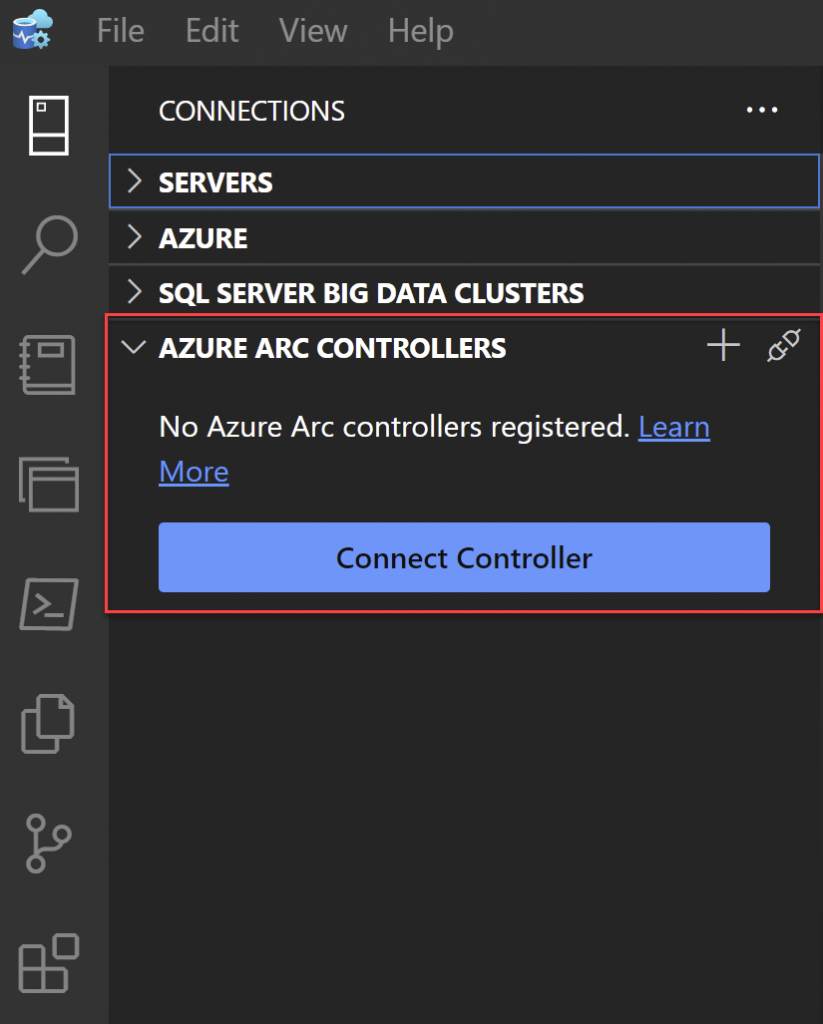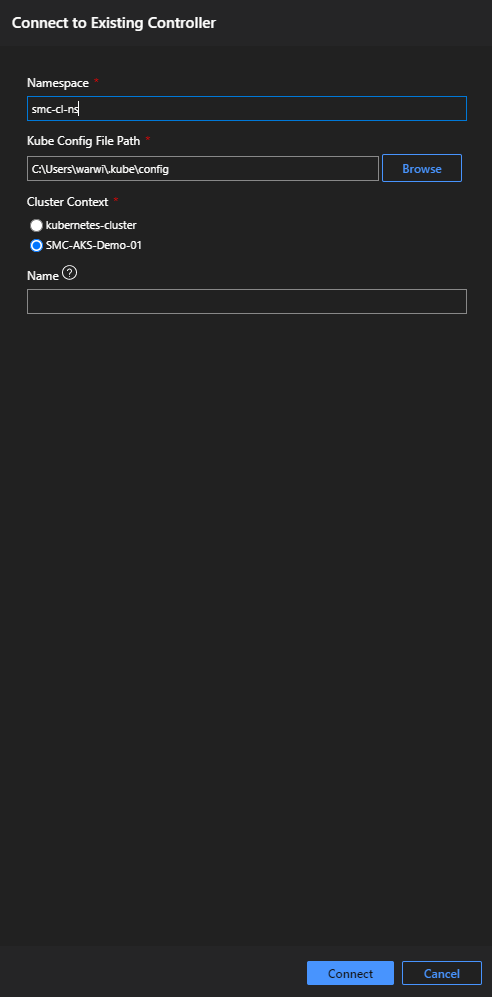In our previous post, we deployed our first Arc Data Control (directly connected). In this post, we will look at how we can connect and manage our Arc Data Controller.
Just like with the deployment, Azure Data Studio (ADS) with the appropriate extensions:
- Azure CLI
- Azure Arc
Is required for connecting to and managing your Arc Data Controller. Before proceeding with this post ensure you have ADS installed and the above-mentioned extensions.
With ADS open and running you can create connections to Arc Data Controllers the same as you can with Instances of SQL Server. In ADS we have under the connections area a section specific for Arc Data Controllers.

Clicking on either the “Connect Controller” or the “+” will provide you with the connection window allowing you to enter the namespace you created your Arc Data Controller in. You will need to ensure that you have the most updated kube.config file. The path will be displayed in the Kub Config File Path or you can navigate to it if you have it in a different directory. Select the associated Kubernetes cluster that you deployed your data controller on.
Click Connect.

When connected you are provided with details about your cluster and tasks you can undertake. Things that you can do are:
- Jump to the resources in the Azure Portal
- Add a new Instance of SQL Server Or PostgreSQL (only in Public Preview currently)
- Apply patches/Upgrade your data controller
From ADS in the terminal window, you are also able to manage via CLI commands such as:
- az arcdata ad-connector (allows you to manage Active Directory Authentication for your Arc-enabled data services)
- az sqlmi-arc (allows you to manage your Arc-enabled SQL Managed Instances)
- az sql instance-failover-group-arc (allows you to create and manage failover groups for your Arc-enabled SQL Managed Instances)
- az sql mi-arc (allows you to manage and maintain SQL MI configuration files)
- az sql mi-arc endpoint allows you to list the associated endpoints with your SQL MI
- az sql midb-arc restore allows you to restore a database to an Arc-enabled SQL MI
There are many CLI commands that you will need to become aware of to fully manage your environment.
In the next post, we will look at deploying a SQL MI on our Kubernetes environment.







Leave a Reply